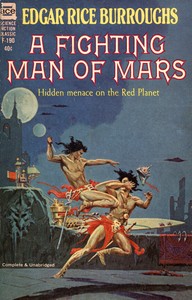Shardstone
Hero
I think I might put these original old school first campaign rules into a doc like OSE and play it with these assumptions. sounds fun tbh
Agreed! Though, TBH, I’d love to see a current printing of the Blackmoor (DYAC) rules and setting as close to what the group still plays. In that documentary, they appeared to be having a blast, and must be, considering they’ve been playing it for over 50 years.I think I might put these original old school first campaign rules into a doc like OSE and play it with these assumptions. sounds fun tbh
Hm, that's a very good point. Comparing the two, they do seem different.
One of the major issues here is that we don't seem to have an example of handwriting from a letter that's unambiguously Arneson's, at least that I can find on a quick search. The closest we have is a few instances of his signature, e.g. page 561, which admittedly does look very similar.
However, checking some other resources I've collected over the years, I realized that I do have a copy of Arneson's handwriting, as there's a scanned copy of the handwritten notes he made regarding Gary Gygax and Rob Kuntz's playing through the original City of the Gods in Kuntz's El Raja Key Archive. Looking over those and comparing them to page 15 of this PDF...yeah, it does look almost identical.
I'm convinced; those notes at the beginning are Arneson's.

Very true. Unless a rule set dealt with a setting/period where female soldiers were fairly common (eg TSR's Legions of the Petal Throne minis rules) "fighting men" was commonplace phrasing in the 60s and 70s. Different times.It was a standard term from military history and wargaming. Like "men and materiel" when referring to military resources. It was gender specific in that older such books do tend to assume that all soldiers are men. Edgar Rice Burroughs used it regularly in his fiction, including one of the Barsoom novels being titled "A Fighting Man of Mars".
And that’s what the court found.
The fact that the draft of D&D is so similar to the outline notes by Arneson is why Arneson won the legal case.
The court decision is in Arnesons favor.
I mostly knew it from Burroughs.Very true. Unless a rule set dealt with a setting/period where female soldiers were fairly common (eg TSR's Legions of the Petal Throne minis rules) "fighting men" was commonplace phrasing in the 60s and 70s. Different times.

Exhibit 8 (PDF 13-14) describes the game that Arneson is already playing.Looking further, the Defendent's Exhibits are described at page 220; Exhibits 8 (page 13-14) and 9 (page 15) "were prepared by David Megarry at witness' request", and Exhibit 10 (pages 16-17) is handwriting unknown (Arneson later says it's not his on page 296).
These Exhibits are further described by Arneson around page 294. It's not clear to me from a quick review whether these were prepared before or after the 1973 draft document.
Serious research into the development of D&D has been ongoing since the late 2000s thanks to folks like Jon Peterson who wrote Playing at the World and others like the Hawk & Moor series and the various forums that the original players hang out at.We see from the notes by Arneson, what the rules for his game look like. His rules are D&D. Arneson invented D&D.
As you can see from one example I posted, the Megarry sheet has a very different set of character attributes.The D&D of Arneson has five ability scores (Intelligence, Cunning, Strength, Health, Appearance), the same abilities that the early draft of D&D uses. And so on with the other fundamental rules of D&D that Arneson invented.
That is what I said, when referring to AD&D being a "derivative work".First, the actual issues in the case were not about who "created D&D," but rather about the specific contract that assigned rights and gave royalties to both Gygax and Arneson. Yes, there were collateral issues raised by affirmative defenses that would go to the issue of how much of a contribution was made to the original rules, but at its heart, this was about construing the contract, and then determining whether or not additional works were covered by the language of the original contract. Okay?
Fair enough. TSR settled out of court.Next, there was no court finding. The case was not resolved at motion practice. It was not resolved at summary judgment. It was headed to a trial, when (at a moment of maximum leverage, given that TSR was booming and they did not want any possible cloud over the IP as they were exploring licensing) ... there was a settlement. That's not a court finding. That's a settlement.
